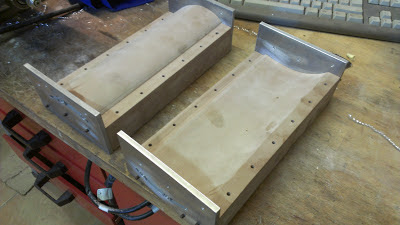The last step of the preliminary design is to find out the actual overall performance of the vehicle. For this purpose, I use a MatLab coded 4 corner vehicle simulation, which I developed as my dissertation.
I will not get into much details about the model. In short, it can simulate the forces, accelerations, speeds and travels of each corner of the car, including sprung and unsprung masses. Additionally, it simulates engine and gearbox functions, as well as aerodynamic effects.
After completing the weight estimation and aerodynamic study, the data was input to the MatLab code to simulate a series of maneuvers: pure acceleration, 180º corner and chicane.
Basically, I wanted to find out how the car would perform and if this would be equivalent to the real F1 car. Let´s take 5g as maximum lateral acceleration of the 1:1 car. At 1:3 scale, this acceleration would be 3 times smaller. Not the force, since there is mass involved, but it would be the acceleration. This is considering, the car has a turn radius of also 3 times less, and speed 3 times less as well. Therfore, the Lat Acc we are looking at is 1,67 g.
In order to run the model, many parameters have to be introduced: polar moment of inertia, masses, inertia of the wheels, engine torque curves, aero parameters, suspension stiffness, and a few more. The CoG is calculated on a quick estimation from the DMU, assuming some masses. The mass is estimated at 12,5 kg, which would be excellent to achieve.
The Tyre model used is a simplified version of Pacejka. The maximum mu coefficient is 2,2, similar to a good racing tyre. I might have gone a bit optimistic here, but the actual values should not be too far. In order to properly find out, I will perform testing on the R26 tyres at 1/5 scale. The tyre construction for this car will be similar.
The simulation is run by a series of driving inputs, that control steering and throttle/brake inputs, as a function of time. After the simulation is run, the results pop up like this:
Therefore, the important results are:
Max Lat Acc: 2,6 g at 120km/h.
Max Long Acc (from a simulation not shown):1,2 g, but average from 15 to 100km/h is 0.56.
Max Speed: 130 ish km/h.
Considering that some of the assumptions might be a bit optimistic, but that there is also room for improvement on the aero side, this results are quite satisfactory. The car will perform slightly better than a scale 1/3 F1 car and will look fast.
Interesting to see from the tyre slip values, is that the handling is very understeering. This is due to the CoP position, which is way too far on the back. I expect to be able to correct this by improving the front wing performance. Testing the simulation with a CoP just 50 mm behind the CoG, an increase of 15% in Lat Acc is obtained.
Next steps is to complete the DMU more components, and perform composite test coupons to gather material data for FEA.






















































